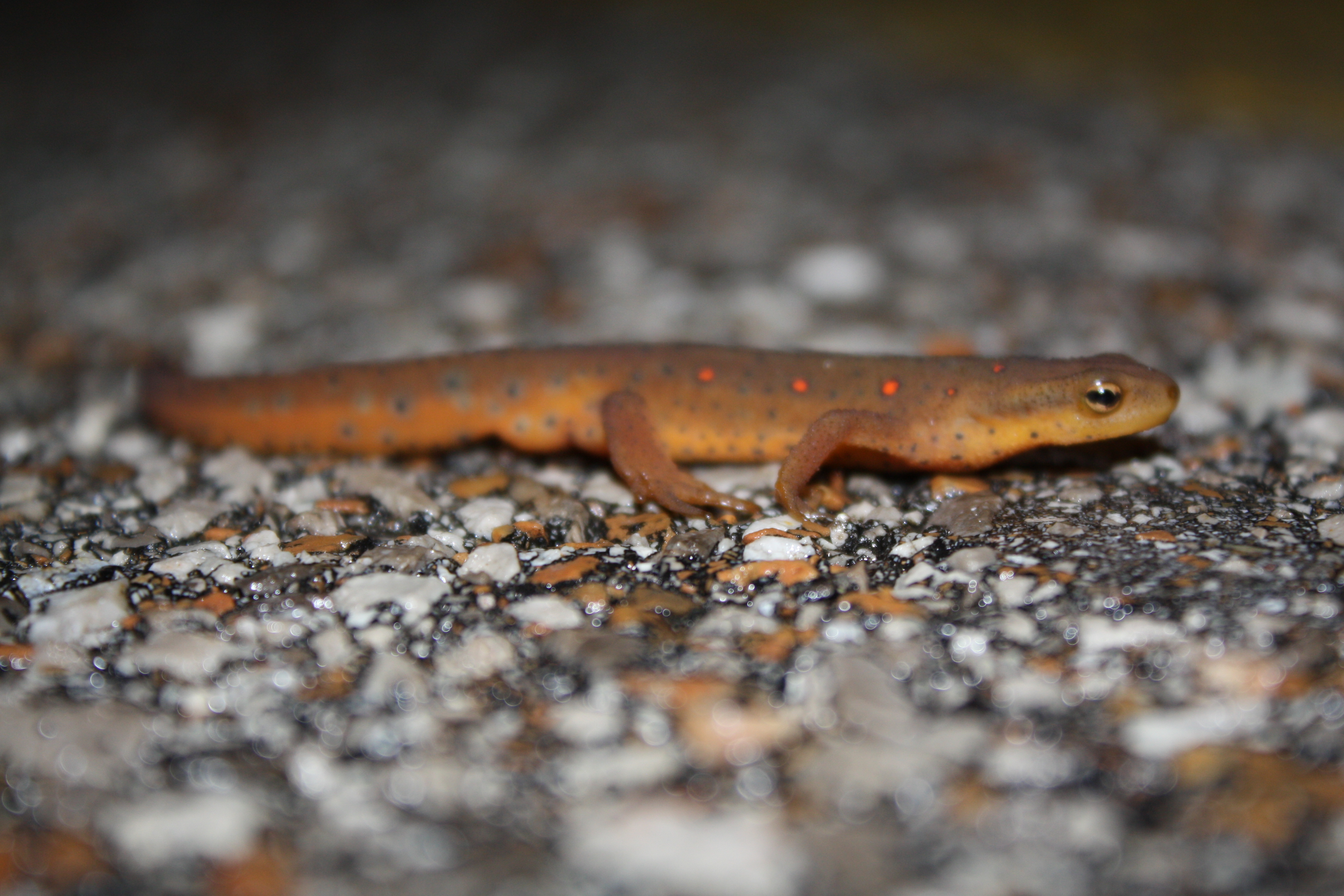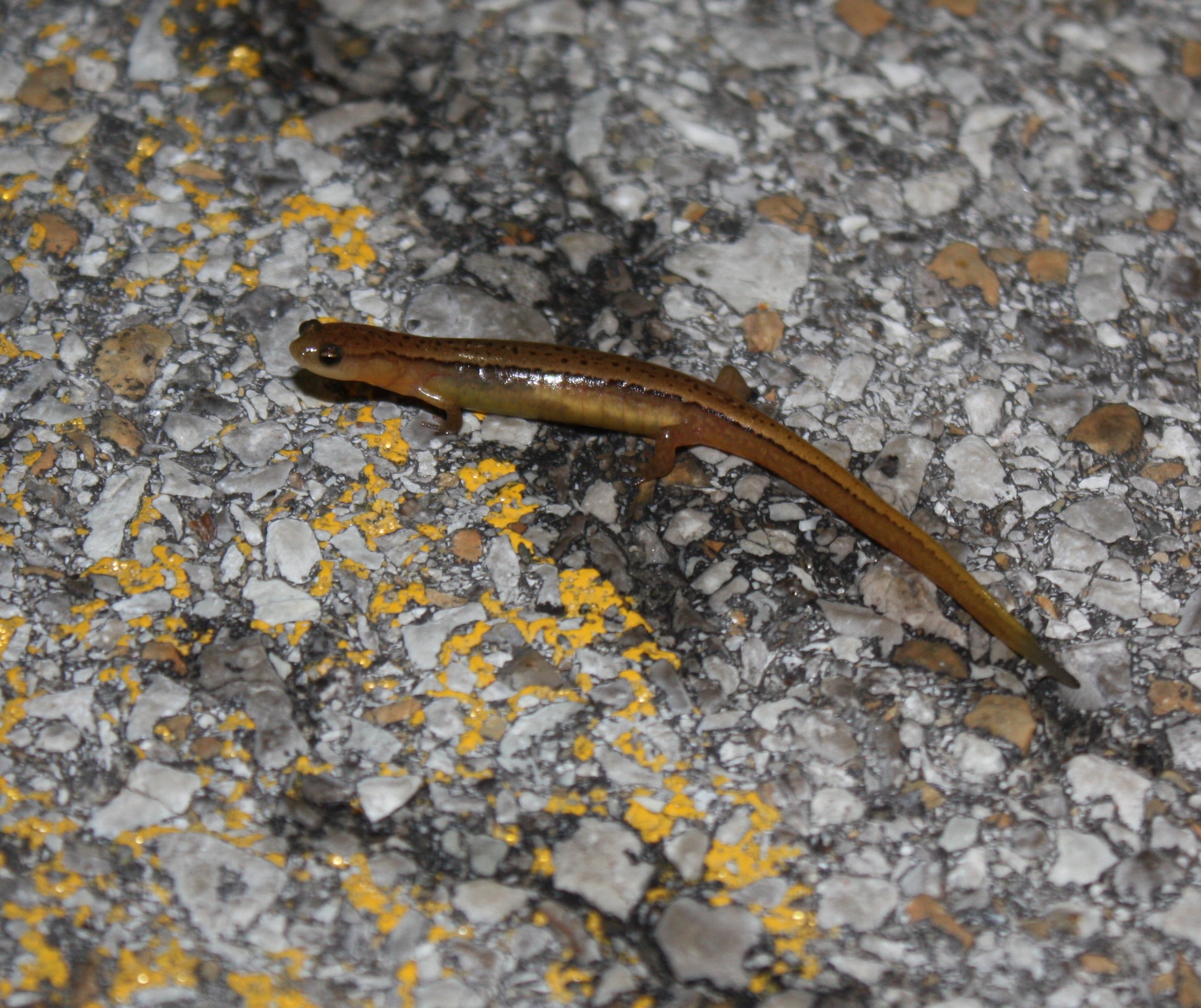|
| |
Rainy day made conditions right for students’ salamander searchRob Weber Ben Brammell, a professor in the Department of Science and Health at Asbury University, said the idea for the salamander search arose because rainy weather made conditions right for “herping,” searching for amphibians, typically after dark and often on backroads in areas close to their breeding grounds.
 The Eastern Newt “I was willing to coordinate the trip because I love amphibians, especially salamanders, and the conditions that night were particularly favorable for finding them,” Brammell said. “One of the most fun and rewarding parts of my job is getting to take students into the field who share a love for nature and are interested in learning. I owe a great deal to my mentors who did the same for me; field trips with Guenter Schuster’s classes were particularly meaningful in shaping my appreciation for and knowledge of aquatic organisms.” Besides Brammell, the salamander search party included Asbury students (Sara Brewer, Brendan Jeffrey, Joanne Jung, Ethan Hoogerheide) and Asbury alumna Mary Johnson, a high school science teacher.  The Southern Two-Lined “It was great to be around other people who share the same passion for nature and science,” Johnson said. “It’s hard to find other people who are willing to go out looking for amphibians, especially at night in the rain and cold. So anytime people are willing, I have to jump on the opportunity! There’s never a guarantee that we’ll find anything because the area and the weather conditions have to be just right. So it’s always very exciting to see salamanders!” The search party successfully identified and observed Eastern Newts (Notophthalmus viridescens), Northern Slimy (Plethodon glutinosus), and Southern Two-line (Eurycea cirrigera) salamanders. Brammell said he appreciated students’ enthusiasm for the trip. “I was inspired to see how excited the students were to go herping despite the cold and fatigue after a long day of presenting and attending sessions. For some it was the first time they had been, and they were incredibly excited to find salamander species they previously only knew from photos walking across the road,” he said. “We also visited a vernal pool that is a known marbled salamander (Ambystoma opacum) breeding area, although we found no evidence breeding had occurred yet getting to show students this unique habitat that we talk about so much in class was exciting.” | |
| KAS Newsletter - December 2022 |